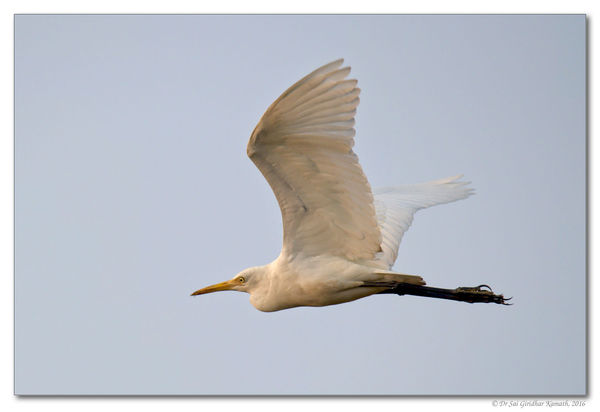Posts for: drgiri
Mar 20, 2016 00:25:20 #
Mar 20, 2016 00:18:51 #
I use Tamron 150-600 on two bodies, Nikon D7100 and D750. When light is good and birds are far off, I used the cropped sensor D7100, otherwise I use the full frame D750.
Mar 14, 2016 06:32:31 #
It depends on what you shoot. I have D750 and some FX lenses, but for Bird Photography, I still use my D7100 with Tamron 150-600 especially when I need the reach. For everything other than birds, I use the D750 and am extremely happy with it. I checked my serial number, and found out my D750 was not recalled.
Mar 4, 2016 03:14:42 #
Just shoot a picture of your camera monitor with your mobile phone!i
Feb 15, 2016 06:27:25 #
I got the 50 mm f/1.8 and realized that I also needed the 35 mm f/1.8 DX and bought it too, they are cheap and worth the money. No regrets!
Feb 14, 2016 10:23:50 #
In my Android phone, I have LightMeter Free by David Quiles. It is free and works suprisingly well...has both incident as well as reflective readings!
Feb 12, 2016 01:18:15 #
steve_stoneblossom wrote:
This seem to make perfect sense. I had been doing... (show quote)
To confuse us further, I think the newer generation sensors, give better signal to noise ratio and better image quality, compared to the ones of yesteryears, even if we keep sensor size, pixel density and total megapixels constant!
Feb 12, 2016 00:58:37 #
amfoto1 wrote:
Larger and less crowded pixel sites that FF camera... (show quote)
Thanks a lot for your patience and beautiful explanation in depth. Understood, each body has its place, we have to use the one which is best for a particular set of conditions.
Feb 11, 2016 13:37:17 #
Feb 11, 2016 05:37:49 #
Apaflo wrote:
The pixel pitch is finest on the D7100 (128 lp/mm), somewhat less on the D800/D810 (103 lp/mm), and lowest on the D750 (84 lp/mm).
Line pairs per millimeter is the standard measure of resolution. For a digital sensor it can be calculated as the number of pixels in a horizontal line divide by the width in millimeters and then divided by two.
Line pairs per millimeter is the standard measure of resolution. For a digital sensor it can be calculated as the number of pixels in a horizontal line divide by the width in millimeters and then divided by two.
Yes, perfectly clear now. Thanks for the explanation!
Feb 11, 2016 04:11:38 #
Macronaut wrote:
I must have missed something here. How do these two cameras have the same pixel density? Both are about 24Mp but, the 7100 crop sensor clearly has a much higher pixel density.
Even a 36Mp sensor has less pixel density than a 24Mp crop sensor.
Even a 36Mp sensor has less pixel density than a 24Mp crop sensor.
Does that mean, each pixel is bigger in size in the 36MP D810 FF compared to the 24 MP D7100 DX sensors?
But since D750 and D810 are same size, full frame; and D810 has more MP, so I deduce that each photosite/pixel is bigger in D750 compared to D810.
As I understand, the noise becomes less with bigger photosites/pixels and the so we can use much higher ISO levels without significant noise in the images.
But the high ISO performance is supposed to be better in the 24 MP D750 compared to the 36MP D810.
Feb 11, 2016 04:05:49 #
So if the light is good, and the birds are far away, I am better off with the D7100 in all other conditions, switch over to the D750. Your advise makes sense. Will do. Thanks a lot.
Feb 11, 2016 04:03:42 #
Apaflo wrote:
If, and only if, the shot is focal length limited and you have enough light to get at least 6.5 fstops of dynamic range, the D7100 will produce better detail than the D750.
The resolution of the D750 is 83.6 lp/mm maximum. The resolution of the D7100 is 128 lp/mm. Hence if cropped down to the same pixel dimensions the D7100 is way ahead on resolution, and thus potential sharpness.
The resolution of the D750 is 83.6 lp/mm maximum. The resolution of the D7100 is 128 lp/mm. Hence if cropped down to the same pixel dimensions the D7100 is way ahead on resolution, and thus potential sharpness.
Yes, very true, but when we upload to social media or website by reducing the dimensions, now I found that both are almost the same.
Check out this Cattle Egret (Bubulcus ibis) Non Breeding plumage-- in flight
Exif: f/8, 1/1600, ISO 1400, 600 mm with D750
Feb 11, 2016 02:40:08 #
Feb 11, 2016 02:35:21 #
Cdouthitt wrote:
If you don't know, then chances are you really didn't need FF.
Just get this to go with your d750 and your troubles will go away:
http://www.nikonusa.com/en/nikon-products/product/camera-lenses/af-s-nikkor-800mm-f%252f5.6e-fl-ed-vr.html
Too expensive you say...then you shouldn't have purchased FF for birding.
Just get this to go with your d750 and your troubles will go away:
http://www.nikonusa.com/en/nikon-products/product/camera-lenses/af-s-nikkor-800mm-f%252f5.6e-fl-ed-vr.html
Too expensive you say...then you shouldn't have purchased FF for birding.
Wow, the 800 mm I can only imagine in my dreams!!! Who knows, might own it one day!!! Wishful thinking!!!
